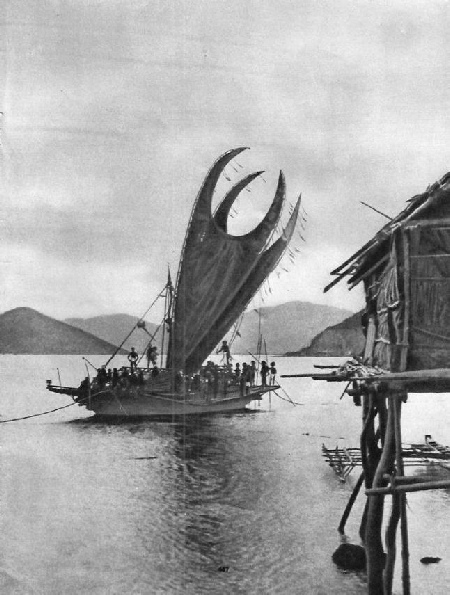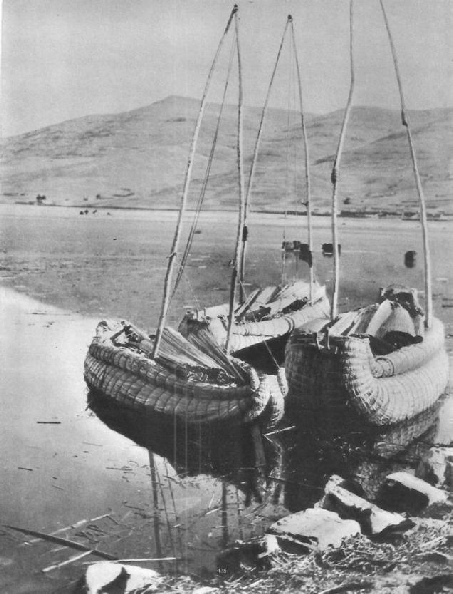
© Shipping Wonders of the World 2012-



Part 14
Part 14 of Shipping Wonders of the World was published on Tuesday 12th May 1936.
It included a centre photogravure supplement featuring native craft, which formed part of the article on A Gallery of Native Craft.
The Cover
For our cover this week I have chosen a beautiful picture of the Joseph Conrad leaving Sydney. She is a full-rigged ship of 203 tons, and was built in 1882. Originally named the Georg Stage, she was for many years a Danish training ship, and further particulars of her will be found in the chapter Training in
Sail To-day .
This illustration was later used as the colour plate issued with part 45.
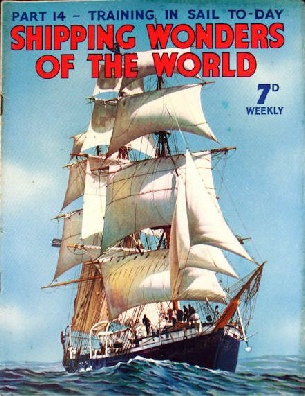
Contents of Part 14
South With Shackleton
Concluded from part 13.
Oscillating Paddle Engines
An account of the remarkable oscillating paddle engines of the last century and of the introduction of the surface condenser, an important development in marine engineering.
This chapter is the third article in the series Marine Engines and Their Story.
A Gallery of Native Craft
Remarkable yet primitive vessels are still built in remote places of the world, often without adequate material, but always with a skill that has been inherited through many generations. In this chapter are described the primitive boats of Egypt, China and the Pacific Islands. Many features now incorporated in modern ships owe their origin to small craft of this type.
A Gallery of Native Craft (photogravure supplement)
Contents of Part 14 (continued)
The Luxury Packet and Cruising Liner
The Monarch of Bermuda and the Queen of Bermuda were both built by Vickers-Armstrong , the latter at Barrow-in-Furness (Lancashire), and the former at Walker-on-Tyne (Newcastle). The electric motors are by the General Electric Company, Witton, Birmingham, and the boilers are by Babcock & Wilcox. These vessels are among the largest electric ships in the world, having four screws and a speed of 20 knots.
This is the ninth article in the series on Merchant Ship Types. There is a separate chapter on “Bermudian Luxury Liners”.
Samsons of the Sea
The Belships have been specially designed and constructed for taking on board any cargo that is too heavy or too bulky for the ordinary cargo ship to manage. Some of the most remarkable cargoes ever carried in hips are handled by the firm of Belships Limited. The carrying of heavy and awkward cargoes, such as locomotives, lightships, pipelines or barges, is the special work of this company, which processes a fleet of striking ships designed for the purpose.
This chapter is the first in the series on Romance of the Trade Routes.
Training in Sail To-day
Those who desire it can still be trained for the sea in sailing ships, and there are a number of special ships in which voyages of instruction can be made. For certain appointments, both British and foreign, such experience in a sailing ship is compulsory. This chapter deals with the sailing ships now afloat that afford such training, and describes the methods employed. The value of training in sail is the subject of much discussion at the present time.
Ship Surgery
When the Suevic was wrecked off the Cornish coast her bow was so badly damaged that it was at first believed that the ship would have to be abandoned to the sea. Enterprising salvage engineers however carried out a daring piece of ship surgery, which is described in this chapter. After being fitted with a new bow, she has since survived for many years as passenger liner, troopship and whaling mother-ship in the Antarctic. The article is concluded in part 15.
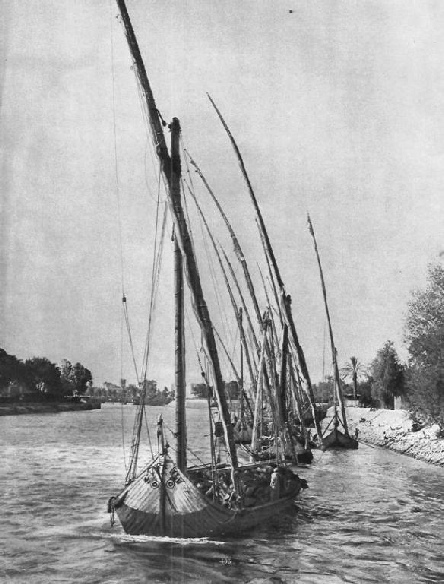
A Gallery of Native Craft:
Photogravure Supplement
The article includes a four-page photogravure supplement as follows.
A FLEET OF NILE BOATS at Sahil Atar el Nahi, Old Cairo, a quay on the Nile. The curious high stems of these boats resemble the boats of the ancient Egyptians, but the lateen sails are derived from the Arabs. The exceptionally long yard of the lateen rig enables the Nile boat to catch the wind when sailing close to the high banks of the river.
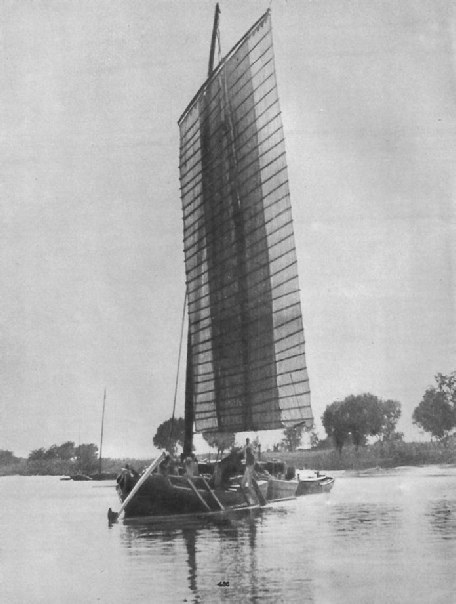
A Gallery of Native Craft - 2
ON A CHINESE RIVER. A large amount of traffic is carried in China by water. The junk illustrated is typical of the craft on the Pei Ho River. The sea-going junk, which uses similar sails, is one of the most seaworthy sailing vessels in the world.
